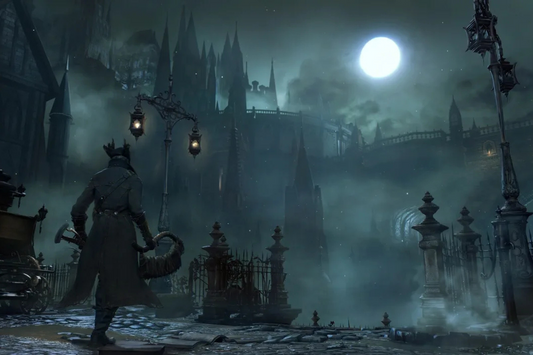Few gaming icons command as much recognition as Master Chief, and The Legacy of Halo remains as influential today as when it first launched. This franchise defined a console generation, reshaped first-person shooters, and forged a cultural phenomenon that continues through new titles. Exploring Halo isn’t just revisiting nostalgia—it’s understanding how storytelling, innovation, and character design can resonate across decades.
A Hero Defined by Silence and Strength
From his first silent walk into the fray, Master Chief embodied stoicism and resilience. In Halo, his words are few, but every action speaks volumes. His quiet leadership and unwavering resolve serve as a moral anchor during humanity’s darkest hours. Rather than relying on dramatic monologues, the character’s impact comes through presence—actions that reflect courage, duty, and sacrifice. That restrained depth shapes The Legacy of Halo more than dialogue ever could.
The Universe Seen Through Its World Design
The world-building behind Halo lore extends far beyond Master Chief himself. From the alien architecture of the Halo rings to the fractured remnants of Covenant civilization, the environments add gravitas to every mission. Whether exploring the eerie corridors of a Forerunner installation or battling on vibrant plains full of alien flora, each zone feels alive with history. These settings are storytelling tools, revealing ancient technology, planetary conflict, and untold tragedies—all reinforcing why Halo resonates so deeply.
Narrative of Humanity vs. the Unknown
At its heart, Halo is a saga about the clash of civilizations and the fight for survival. Master Chief stands at the intersection of prophecy and human determination. As battles escalate with the Covenant, the Flood, and rogue factions, his decisions shape not just humanity’s fate, but the future of galactic peace. This moral weight is woven into the legacy of the games, challenging players to reflect on heroism, ethics, and our collective legacy.
Innovation That Changed the Genre
The Legacy of Halo stretches beyond narrative into transformative gameplay. Halo’s innovations—dual-wielding, regenerating shields, vehicular combat blended seamlessly with infantry skirmishes—became defining staples for many shooters that followed. That blend of scale and tight design allowed epic battles with just the right pace and tension. When Halo first launched, few imagined such a balance between sandbox versatility and structured storytelling, and that design legacy still influences modern action games today.
Multiplayer That Fostered Community
Another key to Halo’s impact is its multiplayer framework. Online deathmatches, objective modes, and custom game variants created a community-driven ecosystem long before user-generated content became commonplace. From LAN parties to ranked playlists, competitive and casual players found shared battlegrounds. Master Chief became not just a character in the story, but an avatar for millions of players building memories together.
Evolving Through Reinvention
As the series evolved—through Halo 2, Reach, ODST, 3, 4, 5, Infinite—the legacy continued because developers balanced innovation with continuity. Each installment expanded on Halo lore, adding layers of political tension, ancient mysteries, and unexpected outcomes. Yet even as tools, graphics, and scale improved, Master Chief remained the emotional constant. That continuity anchors the evolution, and it’s central to why The Legacy of Halo still feels relevant in an ever-changing gaming world.
Reflective Choices and Player Identity
Master Chief’s design reflects the player’s journey as much as his own. Nearly silent, almost mythic, he allows players to project their own decisions into his suit. This paradox—the legend you become through your own gameplay—cements his place in gaming culture. That mirrored identity between player and Spartan reinforces Halo’s impact as both narrative and experience, granting each player a stake in its legacy.
Why the Legacy Continues
Decades after its debut, The Legacy of Halo endures because the series continues to evolve while staying true to core values. Unrelenting action balanced with quiet moments, epic sci‑fi world design tied to human stories, and a hero defined by duty over ego. New generations discover Halo’s themes of sacrifice and hope, while veteran fans appreciate the continuity. Master Chief still matters because his story echoes larger truths about struggle, unity, and the cost of peace.
A Franchise Rooted in Resonance
All these elements—from mission design to multiplayer engagement, from character portrayal to world-building—combine into a franchise that resonates across time. Whether you’re exploring the rings for the first time or returning to relive familiar battles, Halo offers layers of meaning and engagement. That depth is what gives weight to The Legacy of Halo—a franchise built on innovation, community, and the enduring symbol of Master Chief.
Conclusion
Master Chief remains at the heart of one of the most enduring sci‑fi franchises in gaming history. Through decades of arc and battle, his stoic will rides the shifting tides of war and technology. The narrative, world, combat, and multiplayer design of Halo have shaped the medium itself. And that is why The Legacy of Halo is more than a series of games—it’s a cultural touchstone built around a hero whose importance transcends the battlefield. Whether you’re a longtime Spartan or discovering the rings anew, his story is a cornerstone of modern gaming.








